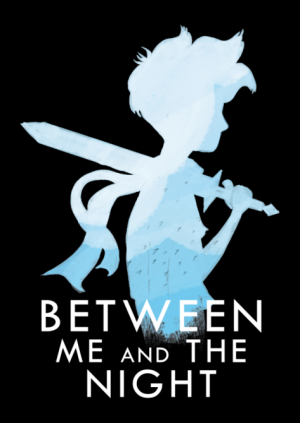Review for The Last Door: Season Two

Back in 2014, The Last Door proved that psychological horror could effectively be conveyed through even the most basic of pixel art presentations. The four-part series followed Jeremiah Devitt as he delved into the occult mysteries of The Veil, a surreal world parallel to ours that looks much the same but is twisted and often triggers trippy hallucinations. Created by indie Spanish developer The Game Kitchen with the help of Kickstarter, the first game was a resounding success that Season Two builds upon and even manages to improve, once again creating a low-res but beautifully detailed Victorian England with a suspenseful Lovecraftian feel.
The new four-episode collection starts right where the first game left off. Jeremiah has disappeared, so this time players step into the role of his therapist, Dr. John Wakefield, who is determined to find his patient. Joined by Dr. Johan Kaufmann, his colleague and professor of the occult, the two men follow the only lead they have on Devitt. Their pursuit leads them into a dark mystery filled with conspiracies, a secret society, and eventually an exploration of The Veil itself. Each installment begins with a skippable recap of what happened previously, which is a nice reminder if you’re not playing them back to back or if you lose track of important plot details. Although the first three episodes are pretty self-contained, the final chapter references events from the original Last Door and nicely ties up all of the loose ends. There are two possible endings, and they both bring a satisfying conclusion to the series.
Players will visit numerous locations around England, many of which are new to the series. Each episode takes place in a different area, from London to the small village of Wickport to the island of Eilis Mor. Within these settings, you’ll explore such places as a shady opium den and the East Hill Lunatic Asylum, which is having funding problems. Travel between them occurs via carriage, train, and boat using a map of the larger area that displays available locales. There is some backtracking involved, but it is not too frustrating since there are only a few screens within any given location and the larger map allows you to move instantly to your desired destination. Further speeding things up, double-clicking the exit of an explorable location will immediately take you to the next screen.
You’ll run into many different people on your journey, and most of these characters are believably relatable. Besides Dr. Kaufmann, there’s Sergeant William Conghill, the only survivor of his military campaign; Captain Morvell, a drunken sea captain who misses the sailing life; and Lord Donnan, whose young son disappeared without a trace. Dr. Wakefield himself is likeable, not wanting to abandon the search for his patient even when it brings danger and tragedy. Dialogue can be advanced by left-clicking, and although the conversations are linear, there are a few times when you can choose how to respond, like when a person asks if Dr. Wakefield is a religious man. Although such options do not impact the larger story, they do subtly alter the immediate conversation.
Just like the first game, The Last Door: Season Two is very effective in building a tense and spooky atmosphere, with the clever use of light (and lack thereof) adding to the disturbing mood. Candles flicker and leave some parts in shadow, and in dark places Dr. Wakefield must use a lantern that only illuminates a small area around him. This bubble of light in an otherwise pitch-black environment makes it feel like unseen things are watching from the dark. One scene has Dr. Wakefield in a basement, his only source of light the few matches in his possession. Each lit match dies after a few seconds and leaves the player in total darkness with only the sound of the protagonist breathing and the next match striking. Creepy.
Adding to his troubles, the doctor’s investigation has not gone unnoticed. Something is determined to stop him – to scare him away at least, but it is not above killing to protect the secret of The Veil. In the spirit of Lovecraft, the game gives players only a glimpse of something frightening and grotesque, but that mere glimpse makes the darkened shadows that much more unknown and scary. This means of hinting at danger without showing everything wisely leaves much to the player’s imagination, which is often more terrifying than reality.
Also like its predecessor, the new season is a standard third-person point-and-click adventure. Left-clicking controls movement as well as interaction with hotspots, with a smart cursor indicating what actions are possible. Some hotspots offer only descriptions, which are really well written and make the surrounding world more vivid. And they should, since the developers let their beta players write item descriptions and picked the best ones for final release. At the time of writing this review, there are still a few descriptions missing with placeholder names instead, though I imagine this will be corrected. When Dr. Wakefield picks up an item, he usually gives some kind of hint how it can be used. Inventory is stored at the bottom of the screen in a black bar with a magnifying lens that provides item descriptions, and in some cases a close-up view that shows more detail, such as a model of a soldier.
The biggest improvement between seasons is that the variety of puzzles has vastly increased. There are still plenty of inventory obstacles, some of which involve multiple steps to complete, like getting the lighthouse lamp on the island lit again. And these puzzles make sense in context, like not having any change to buy a newspaper. (Of course a successful therapist would have enough money to buy one, but not having change is an organic way to facilitate a puzzle.) But this time around, there are far more challenges to contend with. Other puzzles include opening a safe using external clues, changing portraits to fit the personal descriptions, and playing a piano piece. The latter thankfully does not require any musical knowledge, as Dr. Wakefield will comment on the name of the notes on both the sheet music and piano keys.
Riddles are also used a lot in Season Two, and correct answers often reward you with a key to open a previously blocked-off area. Some riddles have clues in short book passages, like figuring out which birds to interact with in the aviary, while others are vaguely worded. You’ll have to figure out for yourself what “look into your soul in the heat of passion” might reference. One of the riddles is a word puzzle that tells the route taken by a famous explorer, which you must then duplicate on a globe. This particular puzzle gave me temporary trouble of a different sort, as I didn’t realize at first that the mouse had to be held down while drawing a path on the globe. Besides this purely mechanical confusion, however, the riddles all make sense and are fun to solve.
The game also includes two mazes. That thought may turn off many players, myself included, but the first one is actually enjoyable and relies solely on text and no visuals. Dr. Wakefield uses hypnotic regression on someone, and tries to talk the person through the location inside their head. It makes sense that the doctor, and by extension the player, cannot see what the person describes. The patient details what he is seeing in that area and if he can go farther north, south, east, or west. The object is just to explore, and landmarks help differentiate the different areas. There are few enough areas that you can backtrack and not easily get lost. The second maze, unfortunately, has you personally wandering a forest with many different paths to take, and this is much more frustrating, at least for me. Each path has a symbol nearby which corresponds with a clue that indicates which paths you should take, but what makes it frustrating is that the forest and the paths all look the same. It was very easy for me to get turned around and forget exactly where I was.
If you’d hoped never to see the low-res graphics of the late ‘80s again, The Last Door is certainly not for you, but they are beautiful in their own heavily pixelated way. The aesthetic is much the same here as it was in the first game, with blocky textures that still manage to convey a lot of detail in the larger scenes, and diverse background colors ranging from the murky blue ocean to heavy red in the opium den and the green hills on the island of Eilis Mor. This season has some really breathtaking scenes that blew me away, such as the two main characters moving amongst dead trees and tombstones shown totally in silhouette against the backdrop of a gorgeous golden sunset. Another provocative scene shows the flashback of a soldier wading his way through a deep fog that obscures the people around him, which really highlights the isolation he felt. Most screens have some kind of ambient animation, from carriages rolling past in the foreground to crows circling overhead. The scenes are also brought to life by different types of weather effects; one day snow might be falling while another is dreary with rain.
Smaller details such as facial expressions or a medal on a mantelpiece are too small to be seen with this type of display. Blank faces show no expression, which adds a bit of creepiness to the atmosphere and leaves it to the dialogue to help convey how the characters are feeling. To distinguish between people, the outfits are generally different enough to be noticeable; there’s no mistaking Dr. Wakefield’s blue outer cloak from Dr. Kaufmann’s red one. The hotspots are usually a distinctly different color than the backgrounds, like a piece of white paper on the ground. This makes it easier to find the smaller objects, and I didn’t have any trouble locating them like I did in the first game. While you might not be able to tell what a smaller hotspot is supposed to be at first glance, once you pick it up a close-up of the object is provided, and these are very detailed. Some close-ups, like a swinging pendulum or a moving candle, are used to create a dramatic tone, with the rest of the environment fading away so the focus is solely on that object.
Although the game does not have any voice acting, which I quickly got used to and didn’t find detracted from the experience, the music and sound effects really shine. The main theme is back, a very upbeat tune with a violin, in contrast to a sad string piece that plays elsewhere. Organ music accompanies one scene, and a thrilling piano and violin score adds tension to another. The sound effects are authentic and integrated well into the world. Dr. Wakefield’s footsteps change to suit the type of material he is walking on, such as snow, gravel, wood, or marble. Crows squawk and dogs bark in the distance, and in the more tense scenes in underground rooms, the silence is only broken by the whistling of wind and the thumping emanating from deep caverns.
The game autosaves when exiting, and individual chapters can be replayed. This helps to see both endings, with a single choice in the last chapter affecting which ending you get. The Last Door: Season Two took me around seven hours to finish the first time through, which is a bit shorter than the first game. It was all time well spent, capped off with a nice sense of closure to the overall story about The Veil and the characters we’ve come to know. Its combination of graphics, sound, and plot create a wonderful sense of atmosphere throughout. And best of all, the developers have fixed my main gripes with the first game, like difficult-to-see-hotspots, no puzzle variety, and a lack of memorable characters. I really enjoyed these four new episodes, and anyone who liked the first game should definitely pick up the sequel as well. Newcomers can pick this game up without any prior knowledge of the first game, though they may not understand all of the references in the last chapter. Either way, it’s a must-play for those who enjoy stories about the occult, so long as you have the imagination to perceive the horror behind the pixels.




























